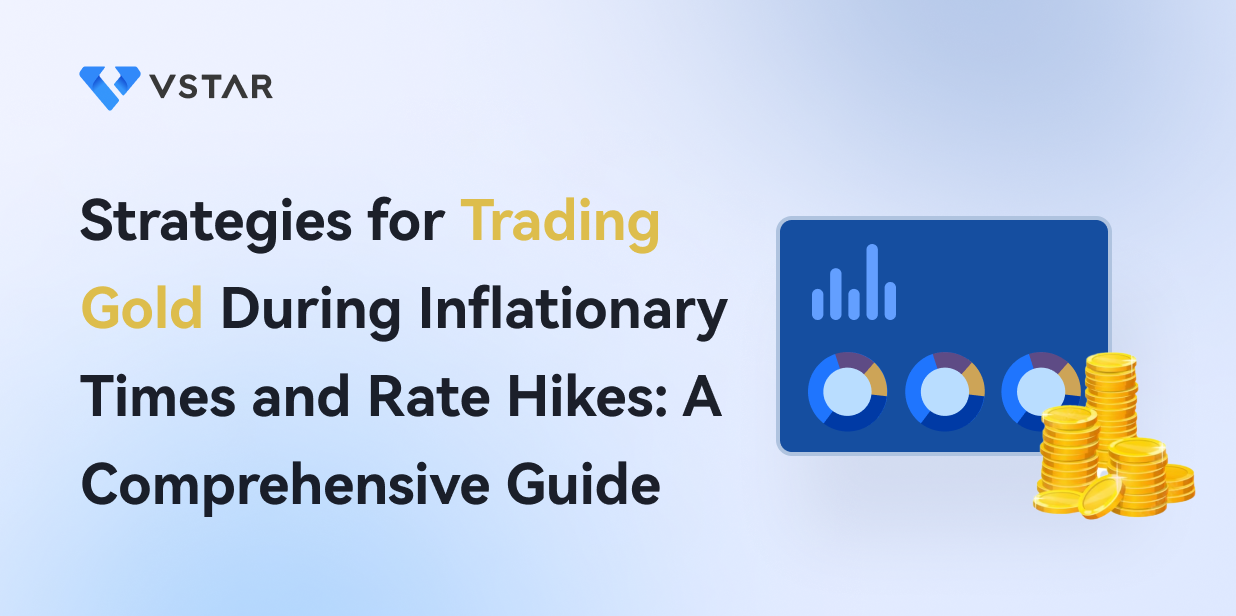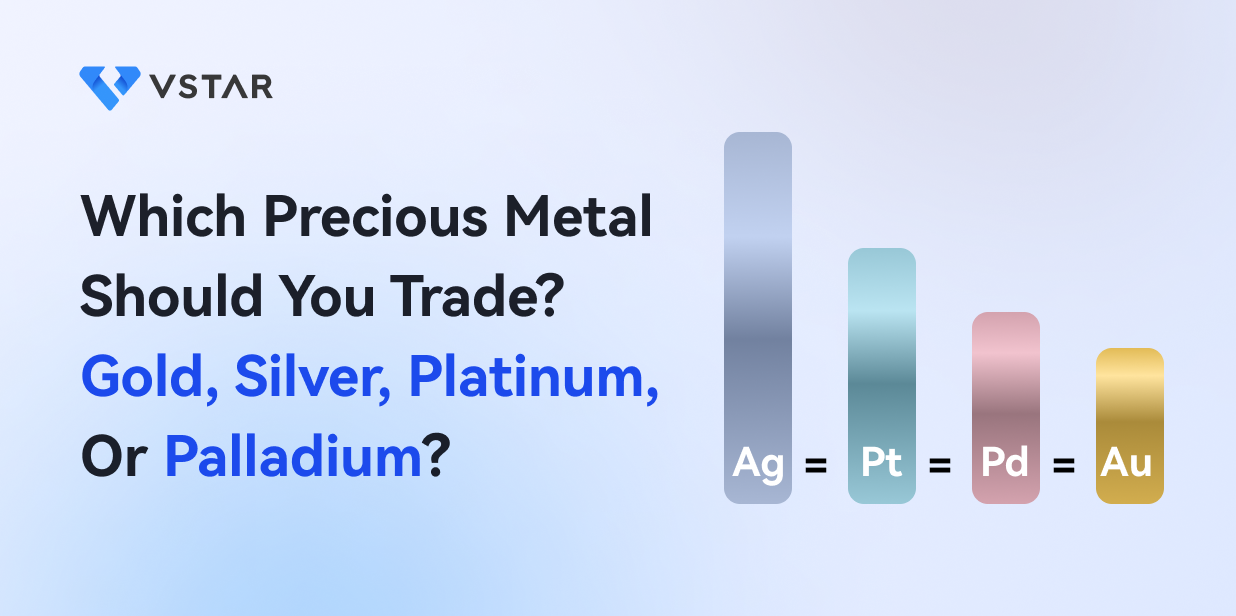I. Introduction
A. Explanation of the importance of charting in gold trading
Charting is crucial in gold trading as it enables traders to analyze historical price data and identify patterns, trends, and support/resistance levels. This analysis helps traders make informed decisions about when to enter or exit trades, anticipate future price movements, and manage risk effectively. Additionally, charting provides access to a wide range of technical indicators, aiding in assessing the strength and momentum of price trends, spotting overbought or oversold conditions, and generating trading signals. By utilizing charting techniques, traders can gain valuable insights into the market and enhance their trading strategies in the dynamic and complex world of gold trading.
B. Overview of the different charting techniques that will be covered
Charting techniques are vital in gold trading as they provide traders with tools to analyze the market and make informed decisions. Candlestick charting, with its visual representation of price data, helps identify patterns and trends.
Moving averages indicate market direction and assist in identifying support and resistance levels. Trendlines connect consecutive highs or lows and guide traders in determining potential breakout or reversal points. The Relative Strength Index (RSI) measures price momentum and detects overbought or oversold conditions. Fibonacci retracement identifies support and resistance levels using the Fibonacci sequence. Profit strategies like swing trading capitalize on short- to medium-term price swings, utilizing charting techniques for entry and exit points. By employing these techniques, gold traders gain insights into market dynamics and enhance their trading decisions. They can identify patterns, trends, support and resistance levels, and potential reversals, ultimately improving their profitability in gold trading.
C. A brief description of the main themes that will be explored
We will discuss the main themes, focusing on:
● Candlestick charting provides visual representations of price data and identifies patterns like Doji, Hammer, and Engulfing, which are helpful in buying and selling opportunities.
● Moving averages help determine market direction, and crossovers like the Golden Cross and Death Cross indicate potential buying or selling points.
● Trendlines assist in identifying trends and reversals, such as ascending and descending triangles.
● The RSI identifies overbought and oversold levels through bullish and bearish divergences.
● Fibonacci retracement identifies support and resistance levels using specific retracement levels.
● Traders can combine these techniques to increase accuracy.
● Profit strategies like swing trading and trend following can be employed, along with risk management techniques such as stop-loss and take-profit orders.
By utilizing charting techniques effectively, traders can make strategic decisions, such as buying on a golden cross or swing trading at a support level with a stop-loss strategy, ultimately enhancing their profitability in gold trading.
II. Candlestick Charting
A. Explanation of candlestick charting and its relevance to gold trading
Candlestick charting is applied in technical analysis to analyze and project price movements in financial markets, including gold trading. It originated in Japan centuries ago and has gained widespread popularity due to its visual representation of price data. Candlestick charts represent the open, high, low, and closing prices for a specific period, such as a day, week, or month.
The relevance of candlestick charting to gold trading is to provide insights into market sentiment and potential trend reversals. Each candlestick represents a specific period and contains valuable information about the price action during that period. Traders can use these patterns to gauge the balance between buying and selling pressure and make informed trading decisions.
B. Identification of key candlestick patterns that are useful for identifying buying and selling opportunities
There are several key candlestick patterns that traders commonly use to identify buying and selling opportunities in gold trading. Here are three examples:
Doji: A Doji candlestick pattern formulated when the opening and closing prices have an insignificant difference between each other, creating a small or nonexistent body. It indicates market indecision and a potential reversal. A Doji can signal a trend change, especially when it emerges after a prolonged uptrend or downtrend.
Hammer: It is a candlestick with a small body at the top of the candle with a long lower shadow or tail. It suggests a potential bullish reversal, indicating that buyers are stepping in after a period of selling pressure. A hammer pattern can be more reliable when it appears near a significant support level, signaling a possible buying opportunity.
Engulfing: The engulfing candlestick pattern consists of two candles, where the second candle completely engulfs the body of the preceding candle. A bullish engulfing pattern emerges when a small bearish candle is followed by a greater bullish candle, suggesting a potential reversal from a downtrend to an uptrend. Conversely, a bearish engulfing pattern emerges when a small bullish candle is followed by a greater bearish candle, indicating a potential reversal from an uptrend to a downtrend.
C. Discussion of how to use these patterns to make trading decisions
Buying Gold when a hammer candlestick appears on a support level: Suppose the price of Gold has been declining and it reaches a well-established support level where buyers historically enter the market. If a hammer candlestick forms at this support level, it signifies that buyers are becoming more active and could potentially reverse the downward trend. This could be seen as a buying opportunity, as the market sentiment may shift towards the upside.
Selling when an engulfing candlestick appears on a resistance level: Conversely, suppose the price of Gold has been rising and reaches a significant resistance level where sellers tend to dominate the market. If a bearish engulfing candlestick pattern forms at this resistance level, it implies that sellers have gained control and could potentially push the price lower. This could be seen as a selling opportunity, as market sentiment may shift towards the downside.
III. Moving Averages (MAs)
A. Explanation of MAs and how they can be used in gold trading
MAs are widely applied in technical analysis to smooth price fluctuations and identify trends in financial markets, including gold trading. A MA is calculated by taking the average price of an asset over a specific period. It leads us to a "moving" average because it constantly updates as new data becomes available, providing a trend line that reflects the average price movement over time.
In gold trading, moving averages can be used to identify the overall direction of the market, spot potential buying or selling opportunities, and determine support and resistance levels. They help filter out short-term price noise and provide a transparent view of the underlying trend.
B. Identification of key MA crossovers that can indicate buying and selling opportunities
There are two key moving average crossovers that traders often look for to identify buying and selling opportunities:
Golden Cross: It emerges when a short-term MA, such as the 50-day MA, crosses above a longer-term MA, such as the 200-day MA. It is considered a bullish signal, signifying a potential uptrend and suggesting that buying pressure is increasing. The crossover implies that the recent price action is stronger, and the overall sentiment is shifting in favor of buyers.
Death Cross: Conversely, a death cross happens when a short-term MA crosses below a longer-term MA. For example, when the 50-day MA crosses below the 200-day MA, It is considered a bearish signal, indicating a potential downtrend and suggesting that selling pressure is increasing. The crossover implies that recent price action is weaker, and the overall sentiment is shifting in favor of sellers.
C. Discussion of how to use moving averages in combination with other charting techniques to increase accuracy
To increase accuracy, moving averages can be used in combination with other charting techniques and indicators. Here's an example of how to use moving averages in conjunction with other tools in gold trading:
Buying Gold when a golden cross appears on a support level: Suppose the price of Gold has been in a downtrend but reaches a well-established support level. If a golden cross occurs at this support level, it suggests that the downtrend may be reversing and a potential uptrend is forming. This could be seen as a buying opportunity, as it indicates that buying pressure is gaining strength. Traders may consider entering long positions when the Golden Cross is confirmed.
Selling when a Death Cross appears on a resistance level: Conversely, suppose the price of Gold has been in an uptrend but reaches a significant resistance level. If a death cross occurs at this resistance level, it suggests that the uptrend may be losing momentum and a potential downtrend is forming. This could be seen as a selling opportunity, as it indicates that selling pressure is increasing. Traders may consider entering short positions when the death cross is confirmed.
IV. Trendlines
A. Explanation of trendlines and how they can be applied to identify buying and selling opportunities
Trendlines are technical analysis tools used to identify and analyze trends in financial markets, including gold trading. They are drawn by connecting two or more vital highs or lows on a price chart, forming a straight line representing the direction and strength of the trend. Trendlines help traders visualize the slope and trajectory of price movements and can be used to identify potential buying and selling opportunities.
In gold trading, trendlines are essential for ascertaining the overall market trend and can assist in identifying entry and exit points. An uptrend signifies a sequence of higher highs and higher lows, while a downtrend signifies lower highs and lower lows. By drawing trendlines, traders can identify the direction of the trend and potential support and resistance.
B. Identification of key trendline patterns that are useful for identifying trends and reversals
There are several key trendline patterns that traders commonly use to identify trends and potential trend reversals in gold trading:
Ascending Triangle: An ascending triangle pattern forms when the price consolidates between a horizontal resistance level and an ascending trendline. The resistance level remains relatively flat while the trendline slopes upward. This pattern suggests that buyers are becoming increasingly dominant, and the price is likely to break out to the upside.
Descending Triangle: A descending triangle pattern is the opposite of an ascending triangle. It forms when the price consolidates between a horizontal support level and a descending trendline. The support level remains relatively flat while the trendline slopes downward. This pattern suggests that sellers are gaining control, and the price is likely to break out to the downside.
Symmetrical Triangle: A symmetrical triangle pattern occurs when the price consolidates between two converging trendlines, one sloping upward and the other sloping downward. This pattern suggests a period of indecision in the market, with buyers and sellers balanced. It is often considered a continuation pattern, implying that the price is likely to break out in the direction of the preceding trend.
C. Discussion of how to use trendlines in combination with other charting techniques for maximum effectiveness
To use trendlines effectively, traders can combine them with other charting techniques for maximum effectiveness. Here's an example of how to use trendlines in combination with other tools in gold trading:
Buying Gold when the price breaks above an ascending triangle Suppose the price of Gold has been forming an ascending triangle pattern with a horizontal resistance level and an upward-sloping trendline. When the price breaks above the resistance level, it suggests that buyers have overcome selling pressure, and the uptrend is likely to continue. Traders may consider entering long positions when the price breaks above the resistance level, using the ascending triangle pattern as a confirmation signal.
Selling when the price breaks below a Descending Triangle: Conversely, suppose the price of Gold has been forming a descending triangle pattern with a horizontal support level and a downward-sloping trendline. When the price breaks below the support level, it indicates that sellers have gained control, and the downtrend is likely to persist. Traders may consider entering short positions when the price breaks below the support level, using the descending triangle pattern as a confirmation signal.
V. Relative Strength Index (RSI)
A. Explanation of RSI and how it can be applied to identify buying and selling opportunities
The RSI is a popular technical analysis oscillator that quantifies the magnitude of recent price changes to ascertain whether an asset is overbought or oversold. It provides a numerical value ranging from 0 to 100, where values above 70 indicate overbought conditions and values below 30 indicate oversold conditions.
The RSI is computed by comparing the average gain and loss over a specified time frame, typically 14 periods. It helps traders assess the strength and momentum of a price trend, identify potential trend reversals, and spot buying and selling opportunities.
In gold trading, the RSI can be used to identify periods of potential price exhaustion or continuation, allowing traders to make informed decisions.
B. Identification of key RSI patterns that are useful for identifying overbought and oversold levels
There are key RSI patterns that traders commonly use to identify overbought and oversold levels, as well as potential trend reversals:
Bullish Divergence: It emerges when the price forms lower lows while the RSI forms higher lows. This pattern suggests that the selling pressure is weakening and that a potential trend reversal to the upside may occur. It indicates that buyers are gaining strength even though the price is declining. Bullish divergence is considered a buying opportunity as it suggests a potential shift in momentum.
Bearish Divergence: It emerges when the price forms higher highs while the RSI forms lower highs. This pattern indicates that the buying pressure is weakening and that a potential trend reversal to the downside may occur. It suggests that sellers are gaining strength even though the price is rising. Bearish divergence is considered a selling opportunity as it suggests a potential shift in momentum.
C. Discussion of how to use RSI in combination with other charting techniques for optimal results
To use the RSI effectively, traders can combine it with other charting techniques for optimal results. Here's an example of how to use RSI in combination with other tools in gold trading:
Buying Gold when the RSI forms a bullish divergence from a support level: Suppose the price of Gold has been declining and reaches a well-established support level. If the RSI forms a bullish divergence, with the RSI forming higher lows while the price forms lower lows, it suggests that the selling pressure is losing strength, and a potential trend reversal to the upside may occur. Traders may consider entering long positions when the bullish divergence is confirmed, using the support level as an additional confirmation signal.
Selling when the RSI forms a bearish divergence from a resistance level: Conversely, suppose the price of Gold has been rising and reaches a significant resistance level. If the RSI forms a bearish divergence, with the RSI forming lower highs while the price forms higher highs, it indicates that the buying pressure is losing strength, and a potential trend reversal to the downside may occur. Traders may consider entering short positions when the bearish divergence is confirmed, using the resistance level as an additional confirmation signal.
VI. Fibonacci Retracement
A. Explanation of the Fibonacci retracement and how it can be used to identify buying and selling opportunities
Fibonacci retracement is a technical analysis tool based on the Fibonacci sequence, a sequence of numbers in which each number represents the sum of the two preceding ones (e.g., 0, 1, 1, 2, 3, 5, 8, 13, 21, and so on). The retracement is used to identify potential levels of support and resistance by applying ratios derived from the Fibonacci sequence.
The key ratios used in Fibonacci retracement are 23.6%, 38.2%, 50%, 61.8%, and 78.6%. These ratios are applied to a price move (upward or downward) to identify potential levels where the price may reverse or find support.
Traders use Fibonacci retracement to identify buying and selling opportunities based on the assumption that markets tend to retrace a portion of a previous price move before continuing in the direction of the trend.
B. Identification of key Fibonacci retracement levels that are useful for identifying support and resistance
The key Fibonacci retracement levels that are commonly used in identifying support and resistance levels are:
50% Retracement: The 50% retracement level is not directly derived from the Fibonacci sequence but is included in the Fibonacci retracement analysis as a significant level. It suggests that the price has retraced half of the previous move, indicating a potential area of support or resistance.
61.8% Retracement: The 61.8% retracement level, also known as the "golden ratio," is a significant Fibonacci retracement level. It is derived from dividing a number in the Fibonacci sequence by the number that follows it. Many traders consider the 61.8% level a key level where the price is likely to find support or resistance.
C. Discussion of how to use Fibonacci retracement in combination with other charting techniques for increased accuracy
To use Fibonacci retracement effectively, traders often combine it with other charting techniques for increased accuracy. Here's an example of how Fibonacci retracement can be used in combination with other tools in gold trading:
Buying Gold when the price retraces to a 50% Fibonacci level on a support level: Suppose the price of Gold has been in an uptrend and reaches a well-established support level. If the price retraces to the 50% Fibonacci retracement level from the previous upward move, it suggests that the price may find support at this level and potentially continue the uptrend. Traders may consider buying Gold when the price reaches the 50% retracement level, using the support level as an additional confirmation signal.
Selling when the price retraces to a 61.8% Fibonacci level on a resistance level: Conversely, suppose the price of Gold has been downtrend and reached a significant resistance level. If the price retraces to the 61.8% Fibonacci retracement level from the previous downward move, it suggests that the price may find resistance at this level and potentially continue the downtrend. Traders may consider selling Gold when the price reaches the 61.8% retracement level, using the resistance level as an additional confirmation signal.
VII. Profit Strategies
A. Explanation of short-term and long-term trading strategies
Short-term Trading Strategies: Short-term strategies aim to capture smaller price movements within a shorter time frame. One popular short-term strategy is swing trading, which involves entering trades to capture swings or fluctuations in price within a trend. Traders generally hold positions for a day to a few weeks, taking advantage of shorter-term price movements. Swing traders may use various technical analysis tools, such as chart patterns, trendlines, and indicators, to identify potential entry and exit points.
Long-term Trading Strategies: Long-term strategies are focused on capturing larger price movements over an extended period. Trend following is a common long-term strategy where traders aim to identify and ride major trends in the market. They enter positions in the direction of the trend and hold them for weeks, months, or even years. Long-term traders rely on fundamental analysis, trend identification, and indicators to determine the overall market trend and potential entry and exit points.
B. Discussion of risk management techniques such as stop-loss and take-profit orders
Risk management techniques play a crucial role in profit strategies to protect against potential losses. Two commonly used risk management tools are stop-loss and take-profit orders.
Stop-Loss Order: A stop-loss order is placed at a predetermined price level below the entry price for a long position or above the entry price for a short position. It is designed to limit potential losses by automatically triggering a trade exit if the price reaches the specified level. Stop-loss orders help traders control risk and minimization of significant losses in case the market moves against their position.
Take-Profit Order: A take-profit order is placed at a predetermined price level above the entry price for a long position or below the entry price for a short position. It is used to secure profits by automatically closing the trade when the price reaches the specified level. Take-profit orders help traders lock in gains and exit trades when their profit targets are reached.
By setting appropriate stop-loss and take-profit levels, traders can efficiently manage risk and protect their capital while aiming for profitable trades.
C. Examples of using charting techniques in profit strategies
Charting techniques can be integrated into profit strategies to identify potential trading opportunities and manage risk. Here are a couple of examples:
Buying Gold on a Golden Cross: A golden cross occurs when a shorter-term moving average, such as the 50-day MA, crosses above a longer-term moving average, such as the 200-day MA. It is considered a bullish signal, signifying a potential upward trend. Traders may use this charting technique as a confirmation to enter a long position in Gold, expecting the price to rise.
Swing trading on a support level with a stop loss below a significant low: Suppose the price of Gold has reached a well-established support level, indicating a potential area of buying interest. A swing trader might enter a long position at that support level, expecting a bounce or reversal. To manage risk, they would place a stop-loss order below a significantly low or a level that, if breached, would invalidate the trade setup.
VIII. Conclusion
A. Recap of the main themes and techniques explored in this guide
In this guide, we explore several important themes and techniques related to gold trading. We discussed candlestick charting and its relevance in understanding price patterns and potential buying and selling opportunities. Moving averages were examined as a tool to identify trend reversals and crossovers that could indicate optimal entry and exit points. Trendlines were explored to identify trends and potential breakout or breakdown points. We also discussed the RSI and how it can be applied to identify overbought and oversold levels for trading decisions. Lastly, Fibonacci retracement was explained as a technique to identify support and resistance levels based on key Fibonacci ratios.
B. Summary of the importance of charting in gold trading
Charting plays a crucial role in gold trading as it provides valuable insights into price patterns, trends, and potential reversals. By analyzing charts, traders can make logical decisions based on historical price behavior and market dynamics. Charting techniques help identify key levels of support and resistance, which can be used to determine optimal entry and exit points. They also assist in recognizing patterns and trends that may indicate the future direction of gold prices. By incorporating charting tools and techniques into their trading strategies, traders can gain a better understanding of market dynamics and potentially improve their trading outcomes.
C. Final thoughts and future considerations
In conclusion, charting techniques provide valuable insights and tools for traders in the gold market. By using candlestick charting, moving averages, trendlines, RSI, and Fibonacci retracement, traders can identify potential buying and selling opportunities, manage risk through the use of stop-loss and take-profit orders, and make logical decisions based on historical patterns and market trends. It is important to remember that no trading strategy is foolproof, and success in trading requires continuous learning, adaptability, and risk management. Traders should also consider other elements such as market fundamentals, news events, and overall portfolio diversification. As the gold market continues to evolve, traders need to stay updated with new developments, refine their strategies, and remain disciplined in their approach. By integrating charting techniques into their trading toolbox, traders can enhance their decision-making process and potentially improve their chances of success in gold trading.




